Varidesk Pro Plus Standing Desk Converter Review
- Lab tested
Like most reviews sites, our editorial staff and laboratory testing expenses are partially offset by earning small commissions (at no cost to you) when you purchase something through those links. Learn More

Overview
| Review Summary |
VariDesk’s original Pro standing desk converter is getting an ergonomic makeover with the introduction of a separate, suspended keyboard platform. This new “Pro Plus” model enhances the ordinary VariDesk with more acceptable ergonomics, while an optional monitor arm provides more ergonomic viewing angles than the VariDesks of old. These much-needed updates keep the VariDesk Pro Plus competitive in an evolving standing desk converter market, but still fall short against more advanced height adjustment mechanisms of other ergonomic risers. |
|---|---|
| MSRP / List Price | $375 |
| Street Price |
30″: $375 |
| Warranty |
5 years |
| Lift Type |
Spring-loaded mechanism with 11 height settings |
| Sizes Available |
30″ x 30″ |
| Colors Available |
Black, White |
| Monitor Arm Mounting Options |
Single monitor arm accessory: $125 |
| Adjustment Range |
Main work surface height range: 4.5″-17.5″ |
| Weight Capacity |
Pro Plus 30: 35 lbs. |
| Number of Monitors Supported |
1 – 2 |
| Competition |
Standing Desk Converter Comparison Reviews
|
| Where to buy |
Buy on Amazon |
Rating
| Stability | |
|---|---|
| Safety | |
| Reliability | |
| Customer Experience | |
| Quality and Aesthetics | |
| Ergonomics | |
| Value | |
| Positives | The VariDesk Pro Plus standing desk converter reproduces the original VariDesk's spacious work surface and excellent stability, but improves upon its ergonomics with the addition of a secondary keyboard tray, which widens the height difference between monitor and keyboard, for better neck and wrist ergonomics. |
| Negatives | The Pro Plus only has eleven height settings, making it difficult to find the ergonomically correct keyboard height. Its lever lock mechanism doesn't adjust in a straight line, but in an arc, forcing users away from their desk and restricting the amount of floor space they have. The Pro Plus does not come standard with a monitor mount. For users to achieve proper work ergonomics, they need to purchase the optional $125 monitor arm accessory. |
Bottom Line
In 2013 VariDesk released their first standing desk converter. It generated a lot of buzz thanks to its low price, ease of use, and spacious work surface. At the time, proper standing ergonomics weren’t understood well, so it was very easy for the VariDesk to get by without paying much attention to user ergonomics. As the popularity of standing at work has blossomed, more and more users are learning the importance of proper ergonomics. It’s not enough to be standing at the office, users are finding out – you also need healthy ergonomics to protect your wrists, neck, and shoulders from strain as you work.
VariDesk’s Pro Plus model is an update to their aging standing desk converter. It improves upon the ergonomics of the older Pro model by including a separate keyboard tray platform under the top work surface. This increases the distance between keyboard and monitor, which in turn provides more comfortable typing and viewing angles for your wrists and neck. Combined with VariDesk’s nominally optional monitor arm, this feature makes the VariDesk Pro Plus a more compelling workstation, though it still suffers from some VariDesk-specific drawbacks.
Assembly-Free Standing Desk Converter
Assembly-averse workers will be happy to know that the VariDesk Pro Plus—indeed, all VariDesk models—come pre-assembled, ready to use out of the box. Lifting it up and placing it on top of your desk is a two-person job, since it weighs between 46 and 61 pounds, depending on the size. But once on your desk it’s just a matter of loading it up with your monitors, mouse, and keyboard. Whereas some standing desk converters need to be clamped to a desk edge or mounted through a grommet, the VariDesk relies on its heavy base to keep it secured to the desk, minimizing the time it takes to actually start working. Of course, the corollary to this is that if you ever want to move the VariDesk to another location you’ll need to call up your friend again.
When the VariDesks first arrived on the market, they were the only to offer this assembly-free design, but now many competitors have taken up the baton and developed similar models. We can point to the iMovR ZipLift, the Ergotron WorkFit-T, and Ergo Desktop’s Kangaroo line as key examples.
Typical Varidesk Style
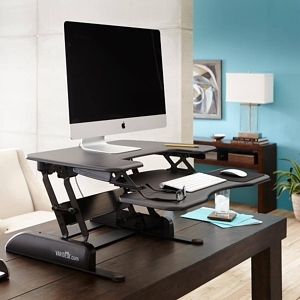 Like all of VariDesk’s standing desk converters, the Pro Plus follows a basic template: A thin work surface atop an adjustable metal base frame. The Pro Plus line deviates from this formula somewhat by dividing the expansive work surface of the original into two distinct platforms. The top work surface measures 30″, 36″, or 48″ wide, and at its narrowest measures between 12 and 14 inches deep, depending on the selected width. This top work surface provides plenty of space, but unless you opt for one of VariDesk’s monitor arm attachments, that space is mostly reserved for your monitors.
Like all of VariDesk’s standing desk converters, the Pro Plus follows a basic template: A thin work surface atop an adjustable metal base frame. The Pro Plus line deviates from this formula somewhat by dividing the expansive work surface of the original into two distinct platforms. The top work surface measures 30″, 36″, or 48″ wide, and at its narrowest measures between 12 and 14 inches deep, depending on the selected width. This top work surface provides plenty of space, but unless you opt for one of VariDesk’s monitor arm attachments, that space is mostly reserved for your monitors.
Suspended 3.5 inches underneath this top work surface is a keyboard tray platform that spans the width of the VariDesk, but at its middle measures 12.5″ to 15.5″ deep, depending again on how wide the selected VariDesk is. This tray has enough space for a full-size keyboard, and has additional space set aside for a left- or right-handed mouse. Check the Size Options tab for detailed images of the VariDesk Pro Plus dimensions. Ergotron’s Workfit-T also has a suspended keyboard tray, but the Pro Plus tray is more spacious. You can extend the work surface of the 30″ and 36″ VariDesks with left and right side panels, which give you another nine inches on each side. These only extend the top surface, not the keyboard tray.
The work surfaces both feature a stippled, textured finish, and have rounded corners and blunt edges. We prefer smooth work surfaces like the one on the Workfit-T because this kind of stippled texture can be a pain to write on, leaving scratchy lines on your handwriting. The Pro Plus is available in two colors: top-to-bottom black or a gray-and-white finish.
The VariDesk Pro Plus’s base is much larger than that of other freestanding standing desk converters. The Kangaroo and Winston, for example, have smaller, triangular bases. These bases are dense enough that they can support the work surface and monitors without any risk of tipping over, just as well as the VariDesk can. At the same time, these smaller bases preserve more of your desk top space, and allow the Kangaroo and Winston standing desk converters to easily move across your desk top if you need to revert back to a table for any reason. In contrast, the VariDesk’s metal base spans the width of the work surface, making it less moveable than either the Kangaroo or the Winston, and less versatile in where it can be placed. The VariDesk, like Ergotron’s Workfit-T, is designed to replace your desk top entirely and is meant to be a permanent part of your workstation.
One benefit of the VariDesk Pro Plus’s large base and frame is that it outperforms much of its competition when it comes to stability. Many standing desk converters with small clamps or bases suffer from a distracting amount of instability, particularly if there’s nothing holding up the front end of the work surface. Workstations like the Quickstand, Workfit-S, and especially Workfit-A all exhibit a distracting amount of monitor shakiness when you type on them. Like the similarly-built Workfit-T, the VariDesk work surface manages to stay still when in use, thanks to its heavy base.
A strong warranty is important when considering a standing desk converter—you need something guaranteed to stay in working order for years to come. Prior to March 2, 2018, the warranty on all Vari products was one year. After this date, it has been upped to five years, allowing Vari to compete with other high-end standing desk manufacturers.
An Antiquated Lift Mechanism

All VariDesk workstations, including the Pro Plus, use the same spring-loaded mechanism to adjust the height of the work surface. Pressing two levers positioned underneath on either side of the work surface releases the locking mechanism, allowing you to lift or lower the work surface; the spring in this mechanism buoys the work surface in place and makes it easy to lift, even when loaded up with monitors and other materials. The Pro Plus has eleven different height settings and can reach a max height of 17″– though the suspended keyboard tray sits at a max 14″ above the desk. Accounting for this height difference between the two platforms, the Pro Plus is definitely on the low end of max height adjustment compared to other standing desk converters we’ve tested, which range between 16.5″ and 22″ in max height. At the end of the day, a standing desk converter’s height is contingent on the height of your fixed-height desk. So it’s always a good idea to measure out how much additional height you need to work comfortably at your desk.
This spring-lock mechanism, a company staple since the original VariDesk hit the scene in 2013, is dwindling in popularity among standing desk converters. Instead, more popular (and more adjustable) gas-assisted lift systems have since become the dominant height adjustment mechanisms for these kinds of devices. Gas lift systems (like those used by the iMovR+Eureka 36, the Kangaroo, and Winston), and mechanical counterbalance systems (like on the Workfit-S) enjoy a few key advantages over the more antiquated locking systems of the VariDesk and Workfit-T.
For one, they’re quieter: Spring-loaded systems make a lot of noise when they lock into place, and there’s no quicker way to draw the ire of your coworkers than with the constant clanging of your workstation throughout the day. Gas lift and counterbalance systems glide quickly and silently into place, without any noise or jittering. These more advanced mechanisms also feature greater adjustability compared to spring locking systems. Because, the VariDesk Pro Plus rises in specific increments to one of only eleven heights, getting the work surface to the perfect position for your wrist and neck ergonomics is nearly impossible. The Workfit-T’s twenty height settings provide users with greater precision than the VariDesk, but neither of these options comes anywhere near the level of customizability that gas- or counterbalance-lift systems offer with their infinite adjustability.
One of the weaknesses inherent to the VariDesk’s spring lock mechanism is that, instead of adjusting straight up and down, it moves in an arc: The higher you raise the work surface, the more it protrudes out front towards you. This forces you away from your desk, making any material there harder to access. It also means that you have less space behind you as well, so workers in more compact office environments will have to sacrifice some of their precious floor space. Users with desks at least 30″ deep have the option to move the VariDesk back as the work surface arcs forward, but then they’re consigned to sliding over 40 pounds back and forth, over and over, throughout the day. Those with narrow desks won’t have this option; they’ll just have to live this arc. In either case, it’s important to ensure that the cables leading to your monitors and peripherals have enough slack, lest you accidentally pull them off the work surface when you bring the VariDesk work surface forward.
You’re $125 Away From Better Ergonomics
The secondary keyboard tray provides the VariDesk Pro Plus with better ergonomics and comfort than the standard Pro model. This is because a lower keyboard height is necessary in an ergonomically healthy posture. It’s crucial that you type with your wrists straight – without any excess flexion – and that your neck does not crane. The extra 3.5 inches of height difference afforded by the Pro Plus’s keyboard tray puts you closer to an ideal ergonomic position, but doesn’t actually get you there. Unlike a true ergonomic keyboard tray, the Pro Plus tray doesn’t offer the sort of negative angles necessary for comfortable wrists. We always recommend typing at a minimum of a negative 15-degree angle (getting between -30 and -40 degrees is ideal) to reduce wrist flexion and prevent strain in your forearms.

But, if you want to work comfortably and ergonomically all day, it’s not enough to have healthy wrist postures. You still need to keep your monitors at proper viewing angles, so that your neck doesn’t crane up or down. Monitor arms like the Ergotron LX series are invaluable tools for providing more comfortable ergonomic heights, but these are designed for desks, not desktop workstations. Most ergonomic standing desk converters have a built-in, adjustable monitor mount attached to a post in the back. These let you control the height of your monitor position, keeping it at the perfect height for comfortable viewing.
VariDesk models don’t come standard with any of these monitor posts. Rather, you’re expected to set your monitors on top of the work surface. Even with the suspended keyboard platform of the Pro Plus, this kind of setup is guaranteed to cause neck and shoulder pain as you’re forced to work in a hunched position. To correct this ergonomic flaw, VariDesk offers an optional monitor arm built specifically for all of their workstations, excepting the compact Soho model. This monitor arm secures to the edge of the VariDesk with a clamp, and mounts any VESA-compatible monitor. Because this is an articulating arm rather than a post, you can easily swivel your monitor around and to the side in addition to adjusting it vertically. Its 20.5″ maximum height, combined with the extra 4.5″ difference of the keyboard tray, makes the Pro Plus the most ergonomically sound of VariDesk’s models, and much more competitive against other ergonomic workstations.
Unfortunately, better ergonomics don’t come cheap for the VariDesk. The single monitor arm costs a heady $125, while the dual-version model costs $195. These additions bring the VariDesk up in price from $375 to at least $500, which puts it in the same price tier as the Kangaroo—which, with its quieter, more precisely adjustable gas-assisted mechanism, is more ergonomic and easier to use than the VariDesk. With that price, it also has trouble competing against the iMovR ZipLift, which features a smooth, infinite-stop lift mechanism, rock-solid stability, and a tilting keyboard tray – all for much less cost. Even with the added monitor height, the Pro Plus doesn’t provide as much value as these other ergonomic workstations.
The Takeaway
The VariFesk Pro Plus improves upon its ergonomically-flawed predecessor with its secondary keyboard platform. This keyboard tray helps put your body in a more comfortable working position, helping to alleviate the neck, shoulder, and wrist pain caused by an improper work posture. However, it isn’t until you add the optional monitor arm accessory that the Pro Plus becomes truly ergonomic. This add-on takes the VariFesk up to $500, pitting it against other units that have more advanced height adjustment mechanisms. See our comprehensive round-up of Standing Desk Converter Reviews to learn about all the competing products in the market, and our VariFesk Reviews to compare this model to the others from the same manufacturer.
And to make sure you’re getting the most out of your converter, check out the iMovR Tucker Pro Cable Management Kit for standing desk converters. It’s the first kit on the market designed specifically for standing desk converters.
Want to Sell A Used Varidesk?
There’s a lot of people in the same boat as you. Check out our brief article for tips.
Size Options
Varidesk Pro Plus Dimensions
| Pro Plus 30 | Pro Plus 36 | Pro Plus 48 |
|---|---|---|
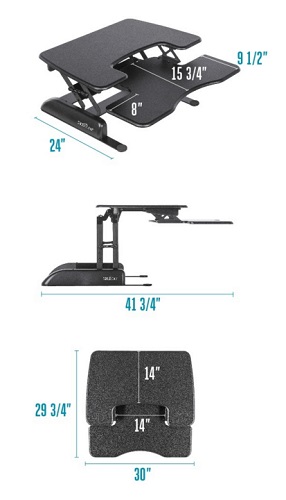 |
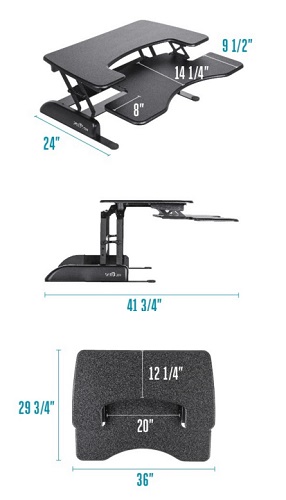 |
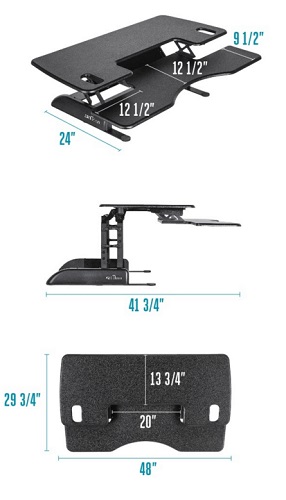 |
Compare
See our comprehensive Comparison Review of Standing Desk Converters


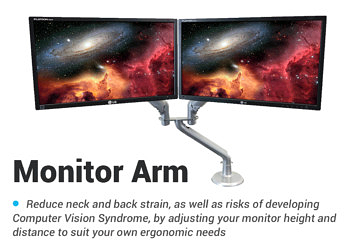
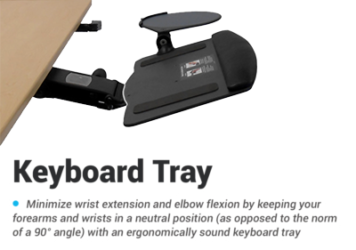
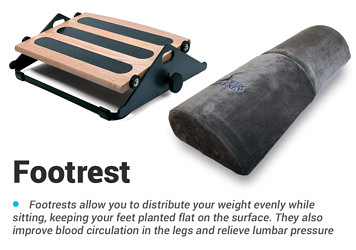
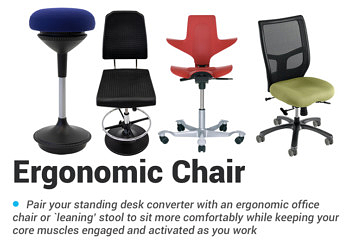
1 Comment
Leave a response >